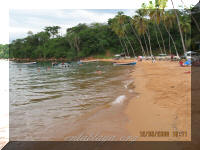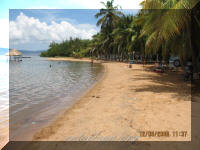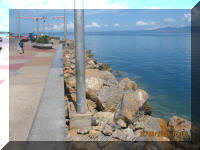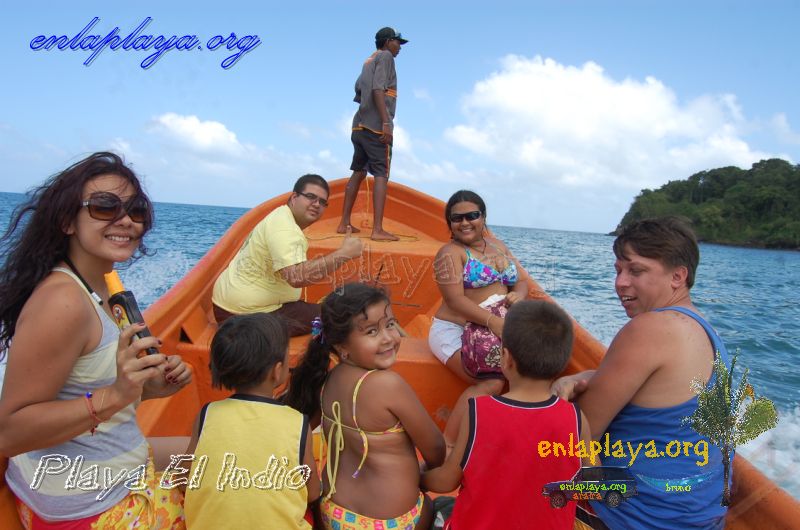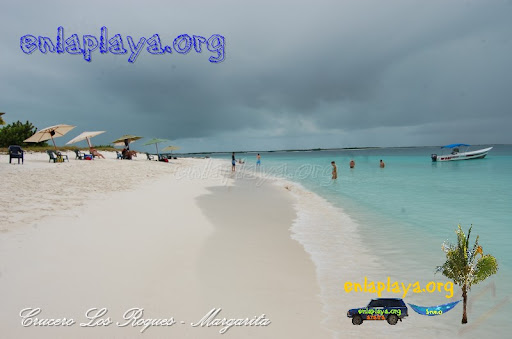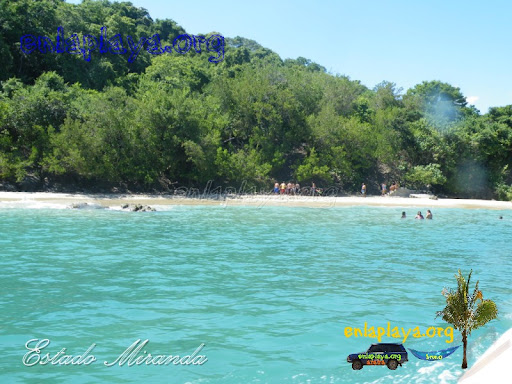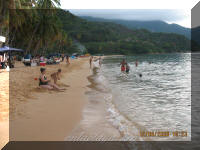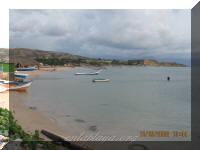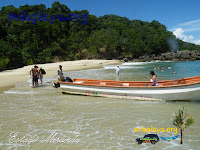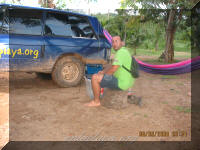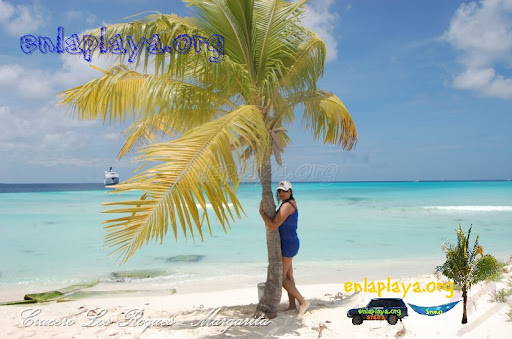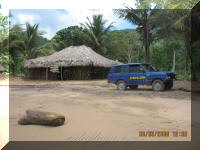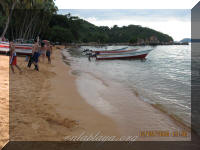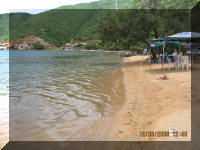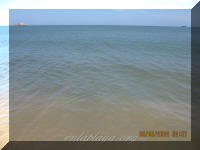SUCRE STATE BEACHES
It is the state with the greatest potential for tourism development, an area of 11,800 km 2 and a population of 825,000 inhabitants. It is located northwest of the country, bordered on the north by the Caribbean Sea, east of the island Trinidad, on the south by the state of Monagas and Anzoátegui west.
Its main economic activities are fishing and agriculture. Sucre, who belongs to an area in prodigious abundance of marine species, takes almost 50% of fish production in the country. Meanwhile, the tourism industry develops steadily, albeit with a long list of attractions for visitors and vacationers, such as four national parks and over 700 km of coastline dream.
Its capital, Cumana, was the first Spanish settlement in South America. The state is named after the Gran Mariscal de Ayacucho Antonio José de Sucre, Venezuelan Independence hero, born in this city on February 3, 1795. Sucre, recognized as the most complete and integrated military heroes of independence, participated in the famous battle of Ayacucho where he earned title.
The state of Sucre is the last place in the Venezuelan eastern coast where you can discover beautiful beaches, almost virgin.
STATE BEACHES
With more than 700 km of coastline, two-thirds of it in magnificent white sand beaches and crystalline waters, "the possibilities offered by the state of Sucre, are endless and extremely varied. The shores of the Gulf of Cariaco, mild temperatures and small beaches are home to so serene as a lake, where you can get hot springs in the sea. Araya Peninsula, whipped by strong winds and fully exposed to intense sunlight, has deserted beaches worthy of a Martian landscape. As for the Paria Peninsula, the south and southeast are some tourist, but hide pleasant surprises: beautiful white sand beaches lined with coconut groves, such as those found north of the town of Guiria. With respect to the north of this peninsula can say that the visitor will live an extraordinary experience, for surely be astonished at the breathtaking landscapes of deserted beaches, rich deep-sea blue, surrounded by lush tropical vegetation
NATIONAL PARK MOCHIMA
Mochima National Park, which Cumanagoto language means "place of much water", is located in the middle of the states of Anzoátegui and Sucre, in the central coastal area of northeastern Brazil between the cities of Puerto La Cruz and Cumana. The beauty of this park lies in the combination of mountains falling into the sea, spectacular beaches and quantities of islands (many of them virtually untouched), to which guests can take the boat service that will get into the area. It has six bays, 16 bays, coves and inlets 106, 127 beaches in costa strong, six and seven rocky islands peninsulas. Its more than 34 islands and large rocks that emerge from the Caribbean Plate, generate a complex system with a rich marine life, dominated the angelfish, Isabelita, cow fish, damsels, groupers, corrochos, parrot fish, trumpet fish, fish Sergeant cachamas and surgeons, to name a few. We also found the whale herring and common dolphins. The park has many nesting and feeding areas for several species of sea turtles and a large number of sea birds, resident and migratory, such as gulls, gannets and frigate at sea. Among the most important islands and islets, we can mention The Chimanas, Mono, Great barracuda, Deer and Drunk.
Mochima is an ideal place for nature lovers as well as the possibility of camping in various parts of the park, has facilities for watching wildlife, birds, fishing, hiking, diving lessons, snorkeling and strolling boat. Apart from the precious coral reefs and their inhabitants, also lie many wrecks in its waters and even some caves for the adventurous.
Arapito BEACH
This is the main beach of Sucre state. It is a large open bay (500 x 300 m) of white sand and emerald waters bordered by tall coconut trees. The surf is moderate to strong and the depth increases rapidly. It offers a wide range of services such as rent chairs and umbrellas, restaurants, ample parking, restrooms and boat to go to other beaches in the park. The weekends are full of vacationers Arapito is best visited on weekdays.
THE POOL
Located opposite Playa Arapito and as its name implies, is a natural pool formed by coral reefs. The sea is transparent and allows for snorkeling. It has no beach, the boats usually carry tourists and wait while practicing aquatic activities.
RED BEACH
The name of this beach, the most famous Mochima Park, is due to the reddish color of the sand. It is a beautiful bay dotted with tall coconut trees, deep water, rough and moderate to strong waves. His list of services is complete, and you can stay on the beach. On weekends, occupied by a crowd of swimmers, can be a real hell. Weekday visit is recommended.
COCHAIMA BEACH
This is a huge and deep gulf in temperate waters, bordered by a friendly town whose main resources are fisheries and tourism, which has increased markedly in recent years thanks to very dynamic tour operators. The beach, a narrow strip of sand (400 x 8 m), is on the edge of town and no vegetation, so that in some lodges provide guests with chairs and umbrellas. Among the restaurants that get on the beach, the most famous is the Yacht Club, where almost the feet in the sea you can enjoy delicious seafood. On the beach there is little privacy, due to how close the town.
THE PEOPLE OF MOCHIMA
This picturesque fishing village is totally dedicated to tourism. The streets and houses are well maintained and the friendly people known to provide services. The village has a great pier that offers trips to all the park's beaches
Quemao MANGROVE AND BARGE
Very near the town of Mochima, 10 minutes by boat, these beaches with calm waters and flat spread over 80 mx 15 m. not very crowded and lack of tourism infrastructure
THE PORT AND PLAYA BLANCA
Located about 15 minutes Mochima, these beautiful pristine beaches, which are deployed on 100m x 15 m, are the busiest in the area. They have tourist facilities such as restaurants, rental of chairs, umbrellas and health. It is possible to stay overnight in the area with permission of Inparques.
Cautaro and CAUTARITO
30 minutes from the beaches Mochima most eastern of the park with an area of 80 m by 10 m. there are the white sands with crystal clear water bath moderate swell. Usually do not get many people. Cautaro beach restaurant service.
MANAR BEACH
It is a peninsula located 20 minutes from Mochima. It is a beautiful white sand beach and crystal waters. No services. From here you can walk to the caves of the Chimane, located at 45 minutes.
CUMANA
It is the capital of Sucre state. Located at the mouth of the Manzanares River, is protected by the cove west of Manzanillo, in the north of the peninsula of Araya and east by the Gulf of Cariaco. Cumana, the first Spanish settlement in South America, was officially founded in 1521 by Gonzalo de Ocampo, though he had been visited in 1515 by Franciscan friars. The town, originally named Nueva Toledo Cumana was renamed in 1569, the name comes from the language of the indigenous Cumanagotos and means "union of sea and river." Its main economic resources are fish (especially tuna) and agriculture. The city beaches can be good for sunbathing, but are not recommended due to urban pollution and the river that flows into the sea without treatment. The picturesque old town is being rescued, the restored colonial harbor and colorful houses inns, restaurants and shops of all kinds.
The Gulf of Cariaco
With an area of 680 km and a maximum depth of 110 meters, the Gulf of Cariaco extraordinary hiding places by the strangeness of their formations, such as hot springs and spas especially calmer waters.
PLAYA SAN LUIS
It is located north of Cumana on University Avenue, along the beach, one of the largest in Venezuela (3 km x 25 m), have flourished hotels of different grades and resorts with many amenities. The downside is the water pollution of the bay.
BEACH PEÑON
This beautiful and quiet beach of 150m x 25 m, is located east of Cumana, in the resort town of the same name. Its shallow waters and warm invitation to submerge them. It offers restaurant services, rental of umbrellas and chairs, bathrooms and parking
Quetepe beach
Located 20 minutes from Cumana, before Mariguitar, this resort is in good condition and invites them to stay. The beach, 100m x 20m, chamomile and Cuji sown, is bathed by shallow waters and peaceful. Provides a wide range of services such as restaurants, bathrooms, rent chairs and umbrellas, and a large private car park from 7:30 am to 6:00 pm. Tourists can stay overnight in tents (Bs 4,000 per tent), but it is important to note that the night does not have any type of surveillance.
BEACHES AND TUNATAL TUCUCHARE
A Quetepe beach 10 minutes from the city beaches are those over 80 mx 15 m. shallow and calm waters, unattractive and do not provide services.
MARIGUITAR TOWN
Located in the Gulf of Cariaco 31 km from Cumana. The main economic activities in the area are Mariguitar canning tuna, sardines and pepitotas and tourism. Besides its beautiful beaches of warm waters, offers good standards of infrastructure and accommodation.
MAIGUALIDA BEACH
In the village of Mariguitar, in the Gulf of Cariaco, lies this beautiful private beach where the cost of entry is limited to payment of parking. Its small size (120 mx 8 m) does not detract from the charm of its red sand and the sea flat and calm. The hotel of the same name available to the vacationers facilities such as toilets, showers, rental of chairs and umbrellas and an excellent restaurant.
Guaracayal BEACH
It is a spa without much interest, fully paved, with almost no sand but gets noisy. It has a tavern, a churuatas, bathrooms, and a small parking lot.
CACHAMURE SPA
This resort, one of the most organized and well-known in the Gulf of Cariaco, was built in an area of hot springs, about 40 km from Cumana, just before reaching San Antonio. Bathed in soft water with little waves, the beach white sand flat with 350 mx 30 m. The spa is fully equipped with restaurants, bar, dance floor, showers, toilets and parking. It is very crowded on weekends
CARIACO
This city 70 km from cumana, was the second Spanish town founded in 1604 by Geronimo de Campos with the name of San Felipe de Austria. Its main economic activity is agriculture, mainly the production of corn, sugar cane, coconut and root crops.
ARAYA PENINSULA
Located north of the city of Cumana and bisected longitudinally by a prolongation of the Cordillera mountains of the coast, the arid peninsula with 70 km long and 10 wide. The vegetation is sparse and few animals are left to see: goats, snakes, lizards, birds.
There are two ways to reach it: the first by a distance of 80 kilometers by road from Cariaco. The second, by sea, in which case you can choose either by barge company Naviarca leaving Cumana and reach the town of Araya about an hour later, or the "boat-bus (known locally as the "Tapaito"), which takes in 30 min. Manicuare the town, where you take a truck to Araya.
To choose what land you will find a path less traveled, strewn with holes and no marking on the asphalt, lined with neat, secluded beaches soaked by a soft sea (the coast is protected by the islands of car and daisy). Under a blazing sun and constant wind, the scenery is stunning. However, it should not take this route at night, it is very lonely and in case of problems is extremely difficult to get help.
THE EAST OF THE PENINSULA
This is an area little known by tourists, despite having some warm-water beaches and attractive inns. To get Cariaco is necessary to go through and follow the road for 6 km to Chacopata to a small crossroads in the town of Campomar narrow coastal mangrove planting. Although paved, the road leading to this village is in very poor condition and in terms of tourism infrastructure in this area is difficult to find something other than lodges. Then we come to the picturesque town of Guacarapo, located 6 km from Chiguana. This is a small fishing village with an attractive beach of shallow water (250 mx 10 m). The last town, chiefdoms, it is 9 km further on, offer a narrow and lonely coastline dark blue waters due to the depth of the gulf. At the exit of Guacarapo not paved the way, if it is widely and is in good condition, passable for all vehicles.
BEACHES EAST
Along the road you can see vast stretches of sand, a more easily accessible than others, and to some extend at the foot of crags and cliffs. On this side of the peninsula, pounding sea, its waves, moderate to strong, transported to the coast many seashells. The scenery is superb, folded rocky and arid plains, swept by winds unceasing, penetrating rays of sun.
THE BEACHES OF THE NORTHWEST
From the town of Chacopata to Taguapire people, lovely beaches along the coast lies are discovered if they leave the main road or look out behind the high dunes. Its main features are dreamy, bright white sand, turquoise sea with moderate waves and very lonely.
ARAYA
At the village of Araya, located west of the peninsula can be reached in two ways. By road or by sea. Its main resources are salt and tourism. The climatic conditions of the area, the sea level and no waves and the wind blows strongly and regularly, lead to water sports like windsurfing and kite surfing. Its splendid white sand beaches are large, very sunny and lack of vegetation.
CASTLE BEACH
Located on the left Naviaca spring at the foot of the fortress of Santiago de León de los Caballeros, commonly called the castle, this beautiful golden sandy beach (450m x 25m) shines in the rays of the sun. Although no vegetation, the heat is not felt too thanks to the constant breeze. The sea, a beautiful dark blue with very little waves, provides optimum conditions for water sports like windsurfing and kite surfing. There are restaurants and rental of chairs and umbrellas.
ARAYA A RIO DE CARIBBEAN
The west of the peninsula of Araya contrasts sharply with the region Mochima park, especially the fascinating deserts of the area, with slopes of sand to the Caribbean Sea, or the spectacular salt, these landscapes of incredible beauty. Its beaches are treasures to be discovered by the tourists a little adventurous.
The rest of the north coast to Rio Caribe has a much greener geography and humid, with vegetation that stands very well the beauty of the Caribbean coast and its vast beaches, like Playa Grande or Copey. Both beach areas deserve a very good tour
PLAYA PUNTA ARENAS
Located southwest of the peninsula of Araya, the beach of 250 mx 15 m is probably one of the most beautiful in the area. Is in an open bay where fishermen protected anchor their boats. It offers soft white sand and turquoise waters, ideal conditions for sampling.
THE BEACHES OF THE SOUTHWEST
After the village of Merit, in a slightly withdrawn, is a succession of small bays, small beaches equipped with simple and very comfortable. The road is paved until 3km before Merit, then becomes a dirt road passable by all vehicles. The beaches are kept in their natural state, without services, so you should go prepared with everything necessary. In the southwestern coast of the peninsula, the sea is smooth, almost no waves, however, is deep and surprisingly cold.
PLAYA MANZANILLO
About 7 km after the toll of Cariaco, on the main road (north), is the fork to Playa Manzanillo. Not formally marked, but is known to residents who ask for your route is essential. From there you travel 12 km (northwest) of a red dirt road in very good condition for reaching the town of Manzanillo, which has a spectacular beach crescent of 500 mx 30 m. The surf is gentle on its eastern side and stronger in the rest, since it is more exposed to the sea. Its fine red sand and turquoise waters are a true delight. The beach is clean and equipped with some coconut trees that are inadequate, so it is recommended to bring umbrella. Despite not having the local tourism infrastructure allow camping on the beach. From there you can enjoy a beautiful view of Coche and Margarita.
SAUCEDO BEACH
8 km, along the road towards Carúpano Cariaco, is signaling to the coastal town of Saucedo, located 2 km from the main road. This fishing village has a beach of 500m x 30m sand and deep red. Despite its great potential has no tourist infrastructure, lack of maintenance. At the end of the paved road of the village, fishermen offer boat rides to the islands of La Orchila and El Moro lasting between 20 and 30 minutes.
EMERALD BEACH
Following the main road and leaving Carúpano left the only pump in the area, is about 10 minutes a fork which points the way to the village of La Esmeralda, which appears on the left 1 km later. This small fishing village in the region is famous for its abundance of mussels, the main fishing place. Five minutes by boat you can reach the islands of La Orchila and El Morro, offering secluded beaches, quiet, and no vegetation. It should bring all they do not possess the necessary infrastructure. The townspeople are friendly, attentive and willing to collaborate.
MANZANILLO TOURIST COMPLEX
Going beyond the road to Carúpano, passing through the Marina area, clearly visible on the left side is a yellow gate marking the entrance to Manzanillo Resort run by the Navy and yet open to tourists in general. There you will find two beaches, Manzanillo (250 mx 20 m) and Lebranche (500 mx 25 m), both of dark sand and located along a very sheltered little cove where the waters are very warm and shallow. The complex is well maintained, offers a hotel, restaurant and all amenities, including a hut beach, children's pool, ample parking and great security.
HIDDEN BEACH
The people of Guaca, 10 minutes from Manzanillo Resort, is the crossing point left to secluded beach, marked with a sign that the former called "military tourism project." A 800 m from the main road, taking a road of red sand accessible to all types of vehicles, this beautiful bay is almost closed 650m x 50 m, extremely calm and flat, no waves or current, ideal for little ones. It has no tourist infrastructure and very little vegetation. The main bathing place are the children and villagers who enjoy the bay on weekends and holidays. The rest of the time is empty.
GUACUQUITO BEACH
Following the road towards Carúpano is reached shortly after Martínez Puerto, a small fishing village which has three beautiful beaches: Guacuquito, Watermelon and Red.
A guacuquito you can get in two ways: on foot or by sea. The overland route, which takes 30 to 45 minutes, can be a bit dangerous because there are many stones. The journey by sea, which takes about 10 minutes, must negotiate with a fisherman. In both cases ensure your vehicle well before departure. Protected from waves by the tip of the port town of Martinez, and with an area of 600m x 20 m, Guacuquito offers a beautiful unspoiled red sand and calm waters. Completely deserted, the beach is still in its natural state, without tourist facility or vegetation, so it is advisable to bring umbrella and sunscreen.
PIN BEACH
Located west of the village in a deep and protected bay of fine sand beige Pin beach (600m x 30m) is distinguished perfectly Guacuquito beach. More visited than its neighbor Colorada beach, this clean and well maintained beach is ideal for family vacationers, it offers good tourist services like restaurants, bathrooms, rent chairs and umbrellas, etc. The only thing you need is a guarded parking, but vehicles are parked too close to the beach and you can see from it.
RED BEACH
Located east of Puerto Martínez, this large beach (450m x 25m) of reddish sand and deep rough seas offers because of their orientation east towards the open sea. No maintenance or services, the beach has many attractions and seems to have been forgotten in the preference of tourists for beach pin. However tourism has potential
Chacopatas BEACH
Chacopata is a small picturesque village about 50 km from Caricuao, opposite the island of Coche. It has a beautiful lagoon occupied by sea birds such as flamingos, herons and pelicans, and a large orange sand beach nestled in a bay of shallow water. The area is very arid and devoid of vegetation. Beachfront, about five minutes by boat, are an island with a small secluded beach, which can be negotiated with the fishermen of the bay. You should go prepared with all necessary, because the place has no tourist service.
BEACHES AND Güiria UVERO
Further to the East Coast, the people of the beach Guiria exhibits a huge bay 2 km X 10 m with two beaches and Guiria Uveros. Shallow water and a mild to moderate surf, beach Uveros owes its name to the many beautiful trees uvero found on its white sands. Surrounded by beach houses in good condition, is equipped with tourist facilities such as toilets, kiosks, parking and rent chairs and umbrellas. It is a very good choice in the area.
The beach is Guiria Uveros extending eastward. White sand covered with shells left by fishermen is also presented extremely full and shallow with a muddy bottom due to the accumulation of marine sediments. Is an urban beach, used mostly by fishermen in the area. For visitors to enjoy, recommend best beach Uveros.
RED AND CARIBBEAN BEACHES
Not to be confused with Red Beach Mochima Park, nor the one in the town of Puerto Martínez. It is a quiet natural beach (60 m X 15 m) of reddish sand that gets along the main road or notice signaling the''''Posada Playa Colorada, then travel about 2 km of a dirt road passable by all types of vehicles. Small, no vegetation and shallow water due to its crescent-shaped beach, Colorada exhibits a beautiful landscape with red rocks in the sea. No services, and although it is maintained is relatively clean. To discover. Her neighbor Caribbean beach is accessible from Red Beach on foot, by a little stoned. We recommend parking in the village for security reasons.
TICK BEACH
This sandy beach pearl (250m x 20m) is located in an open bay, dampened by beautiful blue waters. Front of it you can see some hills that break a little moderate swell and beautify the landscape. Unfortunately the beach is in poor condition, because solid waste is achieved everywhere. Vegetation zones and services, so it is advisable to take all necessary, vehicles may be parked nearby to keep track of them.
COPACABANA BEACH
In the same way, on your left, you get the Copacabana beach, following the direction of the holiday camp Sidor and bordered by the right. A beach with no vegetation, white sand (400m X 30m), flat, mild to moderate swell. Unfortunately until she gets a small river to the sea pollution spewing an unpleasant greenish liquid that gives off a horrible chemical smell. Not recommend it.
COPEY BEACH
Farther Carúpano, and after spending some gaps that had to be populated by pink flamingos in the past, you will find on the left a concrete porch pointing Copey beach access. With an area of 30m X 20m, well protected and crescent, the dark sand beach facing west has a very small swell due to the protection of a large rock peninsula to your right. The water is shallow, making it a good choice for family beach destination, ideal for children, offers some possibilities for quick meals such as pies and cold drinks. The beach, arid, if vegetation is surrounded by beach houses.
PLAYA GRANDE
On the other side of the small peninsula mentioned, begins Playa Grande. Main tourist destination Carúpano zone. Still retains its natural beauty, but not the infrastructure, which, without exception, are in ruins. This beautiful semi-urban beach (2km x 30) of orange sand, moderate waves has to be protected by the peninsula on its eastern side. No formal maintenance along its entire length will get a number of beach houses generally in poor condition.
Carupano
Located northeast of Sucre state, between the peninsulas of Araya and Paria, Cumana, 120 km, Carúpano was founded in 1647 by the Bishop of Puerto Rico Fray Damián López de Haro, becoming the most important indigenous settlement. This city was of great importance due to its port, probe cocoa shipments left par Europe. It was also here that the December 7, 1814 Simon Bolivar decreed the abolition of slavery. Carúpano today is known for its carnival, recognized as the best in Venezuela because of the joy and kindness of its people.
Carupano BEACHES
For their willingness coastal city with some urban beaches, including beach and beach Guayacan Port, both with good tourism potential, but unfortunately impossible to recommend because they suffer from pollution produced evidence of chemical residues and waste from rich city . The urban coastal infrastructure Carupano read, despite being part of a city is hard to develop.
PORTO SANTO
Following the road to the east for 9 km Porto Santo is left. Mainly devoted to fishing, this town is located on an isthmus of 1 km, with a beach-facing port to the west and the other side the beautiful beach resort of Los Cocos, located to the east.
PLAYA PUERTO SANTO
This beach, 350 m X 10 m, is mainly engaged in fishing activities. It is white sand and calm waters, no waves. Not much shade because the vegetation is sparse. Port ships, anchored in the western part of the bay, enjoy its natural protection, and the fishermen's houses and some yards go straight to the sea. No tourist infrastructure.
THE ISLET OF PORTO SANTO
Is a cay located northwest of the town and fully protected (leeward type). Offers a beach with no vegetation desolate and calm waters. It is a good tourist destination, but to get her transportation is non formal, so it is necessary to negotiate the trip with the fishermen. Should be umbrella and sunscreen because the sun is intense and usually not much wind. This beach is 200 m X 20 m of sand is light brown, with little waves. Offers few tourist facilities, including a bar and restaurant very simple. The island of El Morro has steep slopes and vegetation type cactus, so I can not go easily.
COCO BEACH
Across the isthmus lies a beautiful bay full of white sands (600m X 25m). It is a semi-urban beach located on the east windward type) with a beautiful stretch of palm trees that separates the village. Usually has waves due to their orientation and the water is shallow. It has no formal parking, but vehicles to keep track of them, may be left near the beach under the coconut trees. Cleanliness is not uniform, it degrades significantly in the area closest to the people, so we recommend installed on the right side. Kiosks have multiple options and small tourist infrastructure.
IGUANA E CARIBBEAN RESORTS
Before the entrance to the village of Rio Caribe, on the main coastal road, there are two small beaches Los Cocos: The Caribbean Spa (towards the West and moderate waves) and La Laguna beach (towards the East and strong waves .) Between these two beaches, quite alone and abandoned, you get a small bar-restaurant, parking and sanitary co. Offer no particular appeal and also denied maintenance. Continue to recommend best and safest beaches.
RIO CARIBE
A 21 km east of Carúpano this picturesque village is very prosperous in the days when cocoa was the main export product. Evidence of that bygone era are the beautiful colonial houses, some converted to inns and restaurants to enjoy the temporaditas. The town has banks.
RIO BEACH CARIBBEAN
The beach town of Rio Caribe, facing the North, is light brown sand and extends over 900 m X 20 m. Is an urban beach very clean. As the water is calmer on the right side, the fishermen anchor their boats there. Despite this and offer no specific infrastructure is perfectly suited couple visitors to enjoy.
SIMON DIAZ BEACH AND SPA Caracolito
At the end of Rio Caribe, on the left, is a sign that marks the entrance to beach and spa Simón Díaz Caracolito. The Spa Caracolito is about 3km from the main road, accessible by a road suitable for all types of vehicles despite their poor condition. It is a beach 60 X 20 m at the back of a bay full and calm. The cars are parked in front of the beach. Unfortunately it is something dirty, poorly maintained, and infrastructure and health are closed. We recommend avoiding the final destination.
Simon Diaz Beach, located just across the bay, opposite the Spa Caracolito, has no direct access for vehicles and extending along private property. However, since Caracolito there are two ways to get there: walking along a paved path for about an hour, transporting or trading in a fisherman's boat takes about three minutes (recommended). Beach 400 mts x 20 mts is spectacular unspoiled, clean, red sand, lying beneath a forest of coconut trees ... a paradise. Never crowded, except daring season in search of adventure or solitude. Worthwhile venture. 15 minutes from the entrance to Caracolito, en route to the southeast, is a dirt road leading to the beaches Chaguarama Loera, and Uva Nivaldito, all well identified by notices on the road.
Paria Peninsula
Located northeast of Sucre state, the Paria Peninsula known for his landscapes of cliffs of lush tropical forests, which are hidden dream beaches, among the most beautiful of Venezuela. Bathed in deep water colder than the rest of the state, these costs are planted with coconut trees, which gives them a tropical touch. All located east of Yesto are accessible only by sea. Paria region is rich in natural resources such as cocoa, papaya, bananas and fish. The area is populated by descendants of slaves and immigrants from the islands of Margarita and Trinidad. This mixture of cultures influence the cuisine of the region, characterized by its great variety and good flavor.
Chaguaramas Loera
UVA BEACH CAMP
Being returned approximately 300 m take the right side of the crossroads, to reach a private entrance with a warning: "Playa de Uva." Anúnciense in the administration of this extraordinary camp and ask for the step to the beach. Can leave the car in your private parking to go walk to any of the three beaches (Chaguarama Loera, and Uva beach Nivaldito) by two well-maintained paths, thus avoiding pollution. You can not enter the camp drinks and offers this service.
PLAYA DE UVA
Five minutes from the parking lot, through a lovely tropical valley and at the end of a very nice lined veredita bougainvilliers and other flowering plants, find the tiny (30m X 10m) but very pretty beach Uva. This beach has a small strip of white sand surrounded by grass very well maintained Japanese. He enjoys the full service Camp Chairs, restaurant, restrooms, security, etc., All in very good condition, good quality and good taste. Highly recommended.
NIVALDITO BEACH
Located further to the east, Playa Nivaldito (60mts X 15 mts) is a sanctuary of peace and tranquility. It is reached by a path on a slope very well maintained in approximately 10 minutes. Its tropical beauty makes it one of the best options in the area. Protected from the sea by a huge and magnificent stone-island, the beach faces east bay where Chaguarama enhances Loera. Not provide infrastructure, but absolutely worth a visit.
PLAYA MEDINA
This is the most famous beach in the region, located 7 km from the main road, following further eastward. Reached by a paved road in good condition. The hiding of the road for beautiful natural coconut trees cast a shadow helpful for cooling and park the car. Her beauty, described and reported by many, is truly amazing: it is the quintessential tropical beach paradise bay with fine white sand and crystalline emerald waters. With its orientation towards the west the water is very calm, despite a line with floats defines the area reserved for bathing under the supervision of lifeguards. On the right side find a suitable site for snorkeling. With 350 m X 40 m, beach Medina offers all the desired services: health, rent chairs and tents, many local food kiosks and a formal restaurant with a beautiful terrace on the beach itself to the delight of vacationers. At the end of its left side are the infrastructure of a resort that has not spoiled the beauty of the site. We note that the beach and its surroundings are neat and well maintained constantly, which demonstrates that Venezuela can get sites that comply with the rules of modern tourism. Playa Medina is a role model for the entire coast. You can not miss this trip.
Chaguaramas BEACH SOTILLO
To find this place should get to Playa Medina, and once in the parking lot on your right take the only dirt road there. It is imperative to have a four wheel drive vehicle. This beach (50 m X 25 m) deep water and restless with moderate to strong waves, surrounded by dense vegetation, making it a true place of dreams. Completely deserted and as such, has no service, so you must take all necessary. It is a paradise for those who crave solitude. To discover.
PLAYA PUY PUY
It is probably the most famous beach after beach Sucre Medina, whose entry must pass before reaching Puy Puy, 15 km further. Since the detour on the main road until you reach the beach, the road is narrow and with steep slopes, is in very bad condition, with many holes, so we recommend a jeep, if possible, a 4 X 4. This beautiful beach is a great white sand flies 400 m X 35 m, exposed to the open sea towards the north, which explains the abundance of waves and a strong current into the bay. Its waters are dark blue and quickly become deep. It is easy to protect from the sun under the large palm trees on this beach for surfers, clean and safe for tourism as the Organization Corpomedina successfully handles the maintenance. Puy Puy offers 18 cabins and a restaurant built on the beach itself, is also known for being a spawning ground for sea turtles. At the end of the beach to the east, is a small fishing village. To discover.
SAN JUAN WAY OF GALDON
On the road to Medina and Puy Puy Beach will find sales of crafts: cloth dolls, baskets, hats and other objects corozo palm. You can also sample the delicious punch of cocoa little known (in a green house on the right, one minute of crossing the main road from Puy Puy), Following the exploration of the beaches to the east of Venezuela, again Puy Puy the main road towards Yaguaraparo, after ten minutes by car turn left toward Salt River to go to San Juan de Las Galdonas.
CANGUA BEACH
Indicated is the first beach on the road to San Juan de Las Galdonas be reached by taking a short unpaved road and a steep slope, which can be impassable in the rainy season. We recommend a four wheel drive vehicle. Cangua beach is a fantastic tropical white sand beach (900 m x 40 m) lined with coconut trees that provide cool shade. Oriented to the north, shallow waters provide good waves and turns, so it can be recommended for good swimmers., Is an ideal destination for lovers of beaches. You can camp. Discover recommend group and several cars for safety, as it is withdrawn, but so far not reported any problems in this regard.
QUEREPARE BEACH
Two minutes from the beach access Cangua appears Querepare entrance to the beach. The path of 400 m down to the town and its beaches, shows a sharp decline from the beginning, you should avoid during the rainy season as mud pots are created that impede traffic. Querepare has two sandy white beaches and reddish brown with hints of deep water, shaken and dark, strong waves due to the orientation towards the open sea. To the east, is a small beach (100 mts. X 20 mts.), With fishermen's cottages that reach the sea, is used mostly to anchor the boats. To the west, is the tourist beach: a long stretch of virgin of 1,200 mx 10 m, surrounded by vegetation, Uvero and coconut, which provide natural shade cool. During the holidays you can camp on the beach safely and that people rent the services of a watchman for the comfort of tourists. Another interesting option is to rent a very simple but comfortable rooms in the homes of the people (talking to Mrs. Teresa Morin). Between the two beaches is a high rock (semi-island) with a path you can climb steeply to get a good view of both beaches. Highly recommended.
TUCUCHIRE BEACH
At the foot of the historic town of San Juan de Las Galdonas, extending to its west exit, see this extraordinary beach that spans more than one kilometer. Brown sand with very few waves because of its shape of a bay facing east, is perfect for swimming and relaxing under the shade of natural vegetation. You can also delve into his left side. Rich in marine life, the beach, which is lined with buildings (houses, bars, inns, etc..), And urban starts and ends in rural areas. Given its setting, cleanliness is not uniform, but is generally well maintained, will find it cleaner to the west.
SAN JUAN DE LAS GALDON
On the beach of Tucuchire not get services and tourism infrastructure, but in San Juan de las Galdonas find everything you need: accommodation, restaurants, some shops and even simple low-octane gasoline that can be placed in the spring (the right side of the beach), preferably in the morning because it runs very fast. If you plan to continue further to the east, you should fill up your car because it is the only possibility in the area. This village has a good reputation in terms of safety, so we recommend parking on site and very carefully monitored.
WINDWARD BEACH
Located east of San Juan de Las Galdonas, right from the dock, Windward Beach is a great white sandy beach of 800 meters x 30 meters, wind-whipped waves that create moderate permanent. Water depth increases rapidly. Provides natural shade of the many coconut palms that border and has no service in tourism. Only one inn has direct beach access. For more extreme characteristics is much less crowded than its neighbor Tucuchire. You can get more quiet and isolated mainly in the eastern part of the beach. To discover.
PLAYA clams
Two miles east of San Juan de las Galdonas before entering the village of Guacuco, there are two beaches. One of them is Guacuco beach, located to the west and enclosed by the coastline and the road, in terms of other recommend avoiding the neglect is found. Guacuco beach (300m x 20m) provides a moist red sand in shallow water and moderate waves due to the configuration of a small sheltered bay on its eastern side. Natural shade is hard to get scarce as palm trees are too high. The vehicles can be parked alongside the road and not lose sight. The town beach has no maintenance, cleanliness is very irregular and does not offer any tourist service.
PLAYA PUERTO CABELLO
Road to the east, the entrance to this beach is about 15 m from San Juan de Las Galdonas and announced with a notice of wood. From there down a steep slope for a little over 2 km to the village (the road configuration forces us to recommend a rustic). Since the road stands the beach: a tiny strip of white sand at the foot of a giant hill. Once down, the proportions are more real: the beach stretches about 400 mx 15 m. Presents rough seas and heavy surf as it is exposed to the open sea, in Cam season, the waves cover the beach making it disappear almost completely. The hill vegetation provides shade from early morning. Not offer any tourist infrastructure, but it is highly recommended for its beauty and natural charm.
SAN JUAN DE UNAR
This is the last fishing village can be reached by road (or rather a dirt road covered with rocks), although it is passable for all vehicles, we recommend you travel with a rustic and you will find deep holes and high rocks and abuse could loose a conventional car. You can also take public transportation, a pick-up small fee leaving San Juan de las Galdonas and reach San Juan de Unare. The people of Unare is 20 km from San Juan de Las Galdonas does not offer many tourist attractions besides its three beaches: La Uva, El Cocal and a small secluded bay next to El Cocal.
GRAPE BEACH
Located east of the fishing pier, this beautiful beach (700m x 15 m) of light brown sand and warm waters is named after the rare Uveros growing on it and provide welcome shade. In its eastern part, due to its proximity to the fishing pier, is a bit noisy and observe people's waste and pollution. But on its western side the beach is clean and inviting to rest, to get to this part must pass through the dock, cross the area of fishing boats, pass by the National Guard station and walk over numerous stacked logs at the edge of a small river. The beach does not offer services and is not heavily visited swimmers prefer Playa El Cocal.
BEACH COCAL
Through the village of San Juan de Unare you get to Playa El Cocal, a beautiful clear red sandy strip of 350 mx 25 m, washed by water due to strong northeast. Most of all court game is the village children. It offers no tourism infrastructure. At left is a tiny little bay with a white sandy beach which can be reached by swimming or by boat. To discover.
Yesto BEACH
To get there Yes to a dirt road in very poor condition and uncrowded, rustic passable only by vehicles. The rainy season to be cautious and recommend that form huge pools that hinder or impede the passage, but either way it always pays to ask the people for the state of the road before venturing. After 2 km of dirt road appears considerably Yesto extensive and extraordinary beach, with more than 2 km x 30 m, covered many seashells and pebbles polished by the motion of the ocean. Since opening to the open sea and towards the northeast direction, the waves in general is strong and deep enough water, which gives them a dark blue. The most calm corresponds to its western side, where fishermen moor their boats. Since there exits a path on the hill to a lookout coastal and if he goes to run out of breath at the magnificence of the view. When the weather is clear the picture is stunning east, stands a parade of seven strands. The tour of this path is worth the pain, but beware of snakes residents.
From end to end Yesto beach is bordered by lush vegetation among coconut and Uveros it offered a cool and natural shade. The bay houses three small towns, one at each end and one in the middle. The villagers live exclusively on fishing, are very friendly with vacationers and willing to help if necessary. Usually solitary and little visited, is a privileged destination. Camping is allowed and advised to travel in groups for safety. To discover: It's great.
FROM RIO TO CARIBBEAN Güiria
As in the entire Gulf of Paria coast, the waters of this area are very muddy, and rainy season, when the beaches are flooded by their growth, can have brown. These beaches offer a stark contrast to the Caribbean Sea, it feels different environment, different but equally enticing. You have to travel this region to fall in love.
THE PEOPLE OF IRAP
A 50 km from Rio Caribe and 2.5 miles south of the main road east is Irapa fishing village on the southern coast of the Paria Peninsula. This small town, prosperous cocoa export port in the past, is characterized by its tranquility and the friendliness of its people. A special still has a mix of architectural styles of Venezuela and Trinidad, which include some old houses built by the owners of cacao plantations. Unfortunately most are in very bad condition.
IRAP BEACH
Next to the fishing ground at the end of Main Street, Little Sandy Irapa 100 mx 10 m is presented with its dark beige sand lapped by the murky waters of the Gulf of Paria. It is planted with exotic palms and umbrellas are achieved near a kiosk offering local food. Vehicles can park on the street parallel to the beach to keep track of them. There are traces of a tourist was forgotten, because there are still health facilities in poor condition.
SORO AND POINT OF ROCKS
These two villages are located 9 km and 8 km from the main road to the east respectively. The beaches, like most of this area, have the peculiarity of disappearing in the rainy season when the water rises and covers the sand, which is why it is best to visit during the summer. The stormy sea is dark and peaceful. The main swimmers are children of the area.
Guiria
While the city has little to offer tourists, the region adjacent stores pleasant surprises. The nearby mountains are part of the Paria Peninsula National Park and the coast can be explored from many dense pedestrian paths. Güiria provides port facilities and in particular passenger travel and cargo to Macuto and Trinidad. The city is not very well maintained and is very attractive for tourism.
SPA Guiria and COCAL
Located on the Via de Las Salinas, off eastern Guiria, at the foot of the Paradise Hotel. Playa Cocal (700 mx 10 m) is a large swath of beige sand with pebbles which access is unfortunately overrun by weeds and trash. Without maintenance, this beach offers some tourist infrastructure remains totally abandoned. We recommend you follow the road to better beaches.
PLAYA LAS SALINAS
In contrast to this, the beauty of this beach is worthy of a postcard. Is discovered before arriving in Las Salinas, at the foot of a coconut grove, from where a small road on your right leading to it. presented its 200 x 20mm crescent shaped, fine sand is dark brown and very clean, the waters, shallow and transparent extremely protected by the configuration of the bay, showing a particular green - brown due to its location in the Gulf of Paria and its proximity to the mouths of rivers like the San Juan. This beach, natural, precious and no service is surprisingly clean. To discover.
O UPA YAGUARITA BEACH
About three minutes from Las Salinas is this magnificent beach of 150m x 30m, which has nothing to envy to Playa Las Salinas, whose characteristics are similar. Churuatas offers some very simple and basic services in a spa rudimentary yet reveals a tourism effort home. The scenery is spectacular.
CEIBA BEACH
Located about 10 km from Las Salinas, Playa Ceiba (250m x 20m) is hidden behind a field of coconut trees. Unlike the previous black-sand beach and crystal clear waters are ideal for snorkeling. The swell is smooth since it is well protected. Not provide any service and must be parked at the roadside as it is impossible to reach the beach by car.
GO TO Macura
Then the road continues along the coast of the Gulf of Paria towards Macuto. But it is impossible to get there, because although this road was officially opened recently, the works are not completed. In addition, National Guard Güiria not recommend using this route. The easternmost point can be achieved for the town of La Ceiba, from which you can see the beautiful, deep cove Mapire. From there the road climbs to the top of the peninsula and becomes a dirt road deep, impassable even for rustic, so that's not even possible to reach the naval base at Iron Bridge. To go to Macuro have to buy a ticket Bs.F 7 (one way). The output of Guiria fishing pier at 11:00 am and return at 5:00 pm Macuro....


